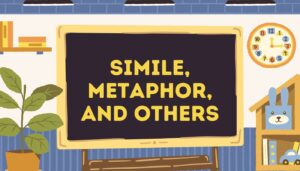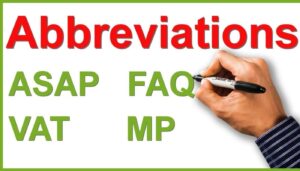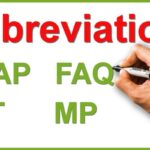Language is one of the most powerful tools we have in connecting with others and expressing our thoughts. Whether you’re writing an essay, crafting a persuasive speech, or just engaging in everyday conversations, choosing the right words can make all the difference.
One group of words that can truly elevate your language are adjectives words that describe, clarify, or modify nouns. Today, we’re diving into 30 adjectives that begin with the letter “P,” offering you a handy list to enhance your vocabulary.
But why focus on adjectives? These descriptive words help paint a picture, evoke emotions, and provide the details that make your communication vivid and engaging. When you use a variety of descriptive words, your language becomes more dynamic, and your ability to express yourself is heightened.
The Power of Adjectives
Adjectives aren’t just fluff; they serve a critical role in both spoken and written communication. Imagine describing a sunset simply as “beautiful,” versus “picturesque, glowing, and vibrant.” The second version paints a clearer and more appealing image.
By carefully selecting adjectives, you make your descriptions more specific, memorable, and impactful.
Describing Personality and Traits
When talking about people or characters, it’s essential to use adjectives that capture their essence. These adjectives provide deeper insight into someone’s personality, making your descriptions more engaging.
- Passionate – Filled with intense feelings or enthusiasm.
- Patient – Able to accept or tolerate delays or challenges without frustration.
- Pensive – Engaged in serious thought; reflective.
- Pompous – Characterized by excessive self-importance or arrogance.
- Playful – Lighthearted and fun-loving.
- Perceptive – Having a good understanding of things; insightful.
- Persistent – Determined to continue despite difficulties or setbacks.
- Pragmatic – Focused on practical approaches rather than theoretical ideas.
- Polite – Showing good manners and consideration for others.
These adjectives are valuable tools for highlighting the nuances of a person’s character, whether you’re writing a biography, describing a colleague, or creating fictional characters.
Describing Things and Objects
Whether you’re reviewing products, describing a scene, or outlining your environment, the right adjectives can bring the physical world to life.
Here’s a list of adjectives that help in painting a vivid picture of things or objects.
- Pristine – Clean, fresh, and in its original condition.
- Pointed – Having a sharp end or tip.
- Practical – Useful and sensible in everyday situations.
- Pale – Lacking color or brightness.
- Puffy – Light and airy, often used to describe textures like clouds or fabric.
- Portable – Easy to carry or move.
- Peculiar – Strange or odd in a way that stands out.
- Plush – Luxuriously soft, often used to describe fabric or furnishings.
- Precious – Of great value or importance.
- Polished – Shiny and smooth, often used to describe something refined.
These adjectives are great when you’re trying to describe the physical characteristics of an object, place, or scene in a way that resonates with your audience.
Describing Emotions and Feelings
Emotions are a fundamental part of our lives, and using adjectives to describe how we feel can help others relate to our experiences.
Here are some adjectives that describe emotional states, perfect for writing about feelings in a more expressive manner.
- Proud – Feeling deep pleasure or satisfaction from achievements.
- Panic-stricken – Overcome with fear or anxiety.
- Pleasant – Giving a sense of enjoyment or comfort.
- Pessimistic – Expecting the worst possible outcome or seeing things negatively.
- Powerless – Lacking the ability to influence or control something.
- Perplexed – Confused or puzzled.
- Pained – Experiencing physical or emotional suffering.
- Playful – Light-hearted and ready to enjoy life.
- Peaceful – Calm, tranquil, and free from disturbance.
These words can help convey the emotional depth of a situation or individual, adding layers of understanding for your audience.
Describing Actions and States
Some adjectives describe not just people or things, but also actions or conditions.
These can help you depict scenarios, moods, or states in a more dynamic and engaging way.
- Punctual – Always on time; prompt.
- Potential – Capable of becoming something in the future.
- Proactive – Taking action by anticipating problems and making decisions ahead of time.
- Progressive – Favoring or promoting change and innovation.
- Pale – Showing a lack of color or liveliness, often due to exhaustion.
- Precarious – In a dangerous or unstable state.
- Poised – Calm and composed, especially in a difficult situation.
- Persistent – Continuing firmly despite opposition.
- Ponderous – Slow and heavy, often used for actions or movements.
These adjectives help give more specific descriptions to actions, making your language richer and more varied.
Describing Personal Characteristics and Traits
Adjectives in this category help you describe a person’s nature, behavior, or inherent qualities.
- Pensive – Deeply thoughtful, often in a serious or reflective way.
- Passionate – Filled with intense emotion or enthusiasm.
- Persevering – Continuing to work hard despite challenges or setbacks.
- Perceptive – Insightful, able to notice and understand things quickly.
- Petulant – Easily irritated or upset, often in a childish manner.
- Pragmatic – Practical and focused on real-world solutions.
- Procrastinating – Delaying or putting off tasks unnecessarily.
- Proud – Feeling a deep sense of satisfaction or dignity about one’s achievements.
- Polite – Showing good manners and respect for others.
- Presumptuous – Overstepping boundaries, often by assuming too much.
These adjectives help to create a well-rounded picture of a person’s personality, making your descriptions richer and more nuanced.
Describing Physical Appearances
When you need to describe someone or something’s physical appearance, these adjectives will help you articulate details more vividly.
- Pale – Lacking color, often due to illness, fear, or lack of sunlight.
- Petite – Small and delicate in stature, typically used for women.
- Plump – Slightly fat, round, or full-bodied.
- Puffy – Swollen or bloated, often referring to a soft, inflated texture.
- Pristine – Unspoiled, immaculate, or in perfect condition.
- Pale-skinned – Having light or fair skin.
- Pockmarked – Covered with small, round marks or scars, often from acne or pox.
- Polished – Shiny, refined, or well-groomed.
- Portly – Having a stout or round body.
- Powerfully built – Strong and muscular in appearance.
These adjectives help paint a clear image when describing someone’s physical characteristics, making your writing more vivid and specific.
Describing Emotions and Feelings
Emotions drive human experiences, and adjectives are key to expressing these inner states. Here are some words to describe various feelings.
- Panic-stricken – Overcome with fear or anxiety, often causing irrational reactions.
- Peaceful – Calm, quiet, and free from disturbance.
- Perplexed – Confused or puzzled by something.
- Pained – Experiencing physical or emotional hurt.
- Proud – Feeling a sense of achievement or dignity.
- Pessimistic – Expecting the worst; negative outlook.
- Playful – Light-hearted, fun-loving, and often mischievous.
- Pleasant – Giving a feeling of happiness or satisfaction.
- Pained – Expressing or experiencing hurt, either physical or emotional.
- Powerless – Lacking control, helpless.
These adjectives allow you to describe emotional states with precision, which is especially helpful for storytelling or personal reflections.
Describing Nature and the Environment
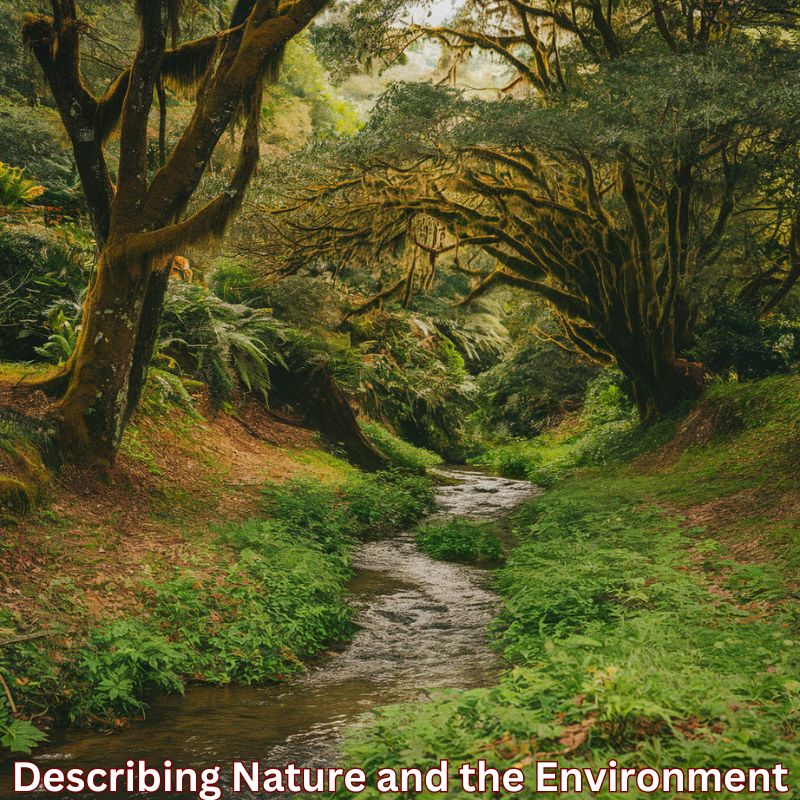
Nature is full of diverse characteristics, and adjectives that describe the natural world can help you bring scenes to life.
- Pristine – Unspoiled and clean, often used to describe untouched nature.
- Perilous – Dangerous or risky, especially in the context of landscapes or environments.
- Polluted – Contaminated, often used for air, water, or environments.
- Parched – Extremely dry, especially in reference to soil or land.
- Pine-scented – Fragrant with the smell of pine trees.
- Peat-rich – Abundant in peat, often describing soil or bogs.
- Placid – Calm and peaceful, typically used for bodies of water.
- Prickly – Covered with sharp points or spines, often used for plants or animals.
- Pustular – Characterized by raised, blister-like bumps, often seen on plants or in nature.
- Pollarded – A tree or shrub that has been trimmed back to promote new growth.
These adjectives are ideal for painting rich, sensory images of the natural world in your writing.
Describing Objects and Things
Whether you’re reviewing items or describing everyday objects, these adjectives help provide specific details.
- Portable – Easy to carry or move from place to place.
- Pointed – Having a sharp or narrow end, often referring to objects or shapes.
- Plastic – Made of synthetic material, often used to describe a wide range of objects.
- Peculiar – Strange, unusual, or odd in a noticeable way.
- Polished – Smooth and shiny, often used for well-maintained surfaces or objects.
- Puffy – Soft, inflated, or filled with air, such as in pillows or clothing.
- Pragmatic – Practical, useful, and realistic in design or function.
- Pale – Lacking strong color or vibrancy, often used for light-colored objects.
- Portable – Capable of being moved around easily, often used for tech gadgets or tools.
- Precious – Of great value or worth, used for items of sentimental or monetary value.
These adjectives can elevate your descriptions of physical items and objects, making them more specific and vivid.
Describing Actions and States
Some adjectives describe the way actions are carried out or the state of being. These can add layers of meaning and context to your descriptions.
- Proactive – Taking initiative and making things happen rather than waiting.
- Persistent – Continuing to act despite obstacles or difficulties.
- Punctual – On time, arriving or happening at the expected moment.
- Powerful – Having great strength or influence.
- Precarious – Unstable or dangerous, often describing a risky situation.
- Playful – Engaging in fun, light-hearted activities.
- Perpetual – Never-ending or constantly recurring.
- Progressive – Favoring or encouraging progress or change.
- Ponderous – Slow and heavy, often describing a movement or thought process.
- Pliable – Flexible and easily shaped or bent.
These adjectives are perfect for conveying the quality or nature of actions, helping you describe scenarios in a more detailed and dynamic way.
Describing Conditions or States of Being
Adjectives that describe different conditions or states can help you clarify the situation or mood in a more impactful way.
- Pale – Lacking color, often describing someone’s complexion.
- Pernicious – Having a harmful, destructive effect, often gradually.
- Pallid – Pale, usually due to illness or lack of health.
- Punctured – Having a hole or break, typically referring to an object or surface.
- Peppy – Energetic and lively, full of enthusiasm.
- Placid – Calm and peaceful, often describing water or a person’s demeanor.
- Prolonged – Lasting for a long time; extended.
- Putrid – Rotten or decayed, often describing unpleasant smells.
- Pallorous – An unhealthy or unhealthy state of being, usually related to skin color.
- Posthumous – Occurring or published after the originator’s death.
These adjectives can help create clarity in describing situations, conditions, or states of being, whether in narratives or everyday conversations.
Describing Personality and Behavior
These adjectives help portray someone’s nature, characteristics, or overall disposition, making them essential for creating compelling characters or understanding others.
- Pretentious – Attempting to impress others by affecting greater importance or talent than is actually possessed.
- Precocious – Having developed certain abilities or proclivities at an earlier age than usual.
- Prickly – Easily annoyed or difficult to get along with.
- Pugnacious – Eager or quick to argue or fight.
- Ponderous – Slow, heavy, and awkward in movement or thought.
- Perfunctory – Done with minimal effort or enthusiasm, often in a routine manner.
- Paternal – Fatherly; showing a caring or protective attitude.
- Pious – Devoutly religious; often showing an outward display of virtue.
- Pernicious – Having a harmful effect, especially in a gradual or subtle way.
- Propriety – Conforming to accepted standards of behavior or morals.
These adjectives are fantastic for character descriptions or assessing someone’s behavior and attitudes.
Describing Appearance or Physical Characteristics
Use these adjectives when you need to describe someone’s physical traits or the appearance of things around you. They can help create a more vivid picture.
- Pale – Lacking color, often referring to skin or objects.
- Pockmarked – Covered with pockmarks, usually referring to a face or surface with scars.
- Placid – Calm and peaceful in appearance.
- Pulsating – Beating with a rhythmic or throbbing motion, often used to describe a visual or sensory experience.
- Piquant – Having a pleasantly sharp taste or stimulating flavor.
- Plaited – Interwoven into braids, typically used to describe hair or fabric.
- Pitted – Marked with holes or indentations, often used to describe damaged surfaces.
- Puffy – Swollen, often referring to a soft or inflated texture.
- Pragmatic – Practical and logical in appearance, often used for objects or design.
- Pallid – Pale or sickly in appearance, often used to describe someone who looks unwell.
These adjectives can enrich your descriptive writing, helping you convey a person’s look or the state of objects around you more precisely.
Describing Nature and the Environment
Nature is filled with textures, conditions, and phenomena that can be described in unique ways. These adjectives allow you to do just that.
- Polluted – Contaminated by harmful substances, especially used for air or water.
- Pristine – In its original, untouched state; unspoiled.
- Pernicious – Harmful in a gradual way, often used for environmental threats.
- Perpetual – Continuing indefinitely; never-ending, often used to describe the endless nature of a phenomenon.
- Parched – Extremely dry, especially referring to land or the environment.
- Perilous – Full of danger; risky, often describing a treacherous environment or journey.
- Pungent – Having a strong, sharp smell or taste.
- Poignant – Evoking a keen sense of sadness or regret, often describing scenes in nature that evoke deep emotion.
- Peat-rich – Abundant in peat, often used for describing soils or bogs.
- Pine-scented – Fragrant with the smell of pine trees.
These adjectives help bring natural settings, environmental conditions, and landscapes to life in your writing.
Describing Actions and States
These adjectives are great for describing the quality or state of actions, situations, or conditions.
- Proactive – Taking initiative to address or solve problems before they arise.
- Persistent – Continuing steadily despite challenges or opposition.
- Punctual – Always on time; prompt.
- Precarious – In a risky or dangerous state, often used to describe situations that require careful handling.
- Playful – Fun-loving and full of energy, often used to describe lighthearted actions.
- Perfunctory – Done in a routine or mechanical way, without genuine effort or enthusiasm.
- Plodding – Moving slowly and heavily, often used to describe a methodical pace.
- Powerful – Having great strength or influence.
- Prolonged – Continuing for a long period of time.
- Poised – Calm, self-assured, and ready to act in a controlled manner.
These adjectives help convey the nature of actions or states, making your descriptions more dynamic and engaging.
Describing Quality or Condition
These adjectives are perfect for describing the quality, status, or condition of things, situations, or people.
- Polished – Refined or sophisticated in appearance, often describing skills or objects.
- Plush – Luxurious and comfortable, often used for fabrics or furniture.
- Prominent – Standing out; important or well-known.
- Pernicious – Having a harmful, negative effect, often in a subtle or gradual way.
- Peculiar – Strange, odd, or unique in a way that stands out.
- Pristine – Immaculate and untouched by any damage or wear.
- Pale – Light or faint in color, often referring to objects or a person’s complexion.
- Pallid – Unhealthy-looking or sickly in appearance, often used for complexion.
- Productive – Efficient and capable of producing a significant amount of output or results.
- Proportional – Having balanced or suitable proportions, often used for describing physical traits or designs.
These adjectives help refine your descriptions of conditions and qualities, making your writing more specific and nuanced.
Describing Feelings or Emotions
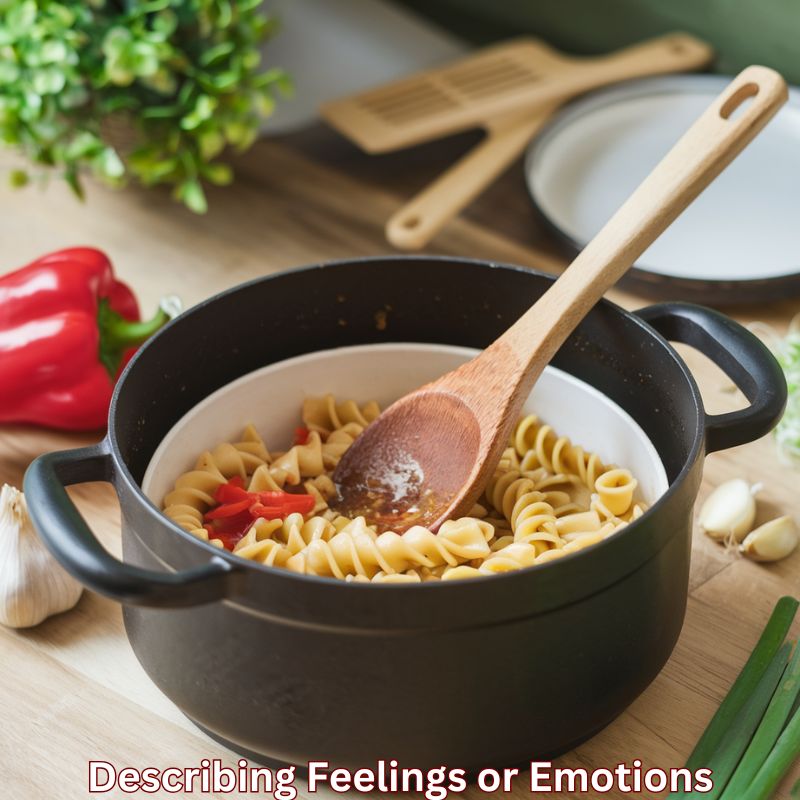
Adjectives in this category help you describe emotions, moods, or inner states with greater precision.
- Pained – Experiencing emotional or physical suffering.
- Playful – Lighthearted, fun, and teasing, often used to describe an energetic mood.
- Pessimistic – Expecting the worst or focusing on negative outcomes.
- Panic-stricken – Overcome with extreme fear or anxiety.
- Proud – Feeling self-respect or satisfaction from an accomplishment.
- Pensive – Deeply reflective, often in a serious or thoughtful manner.
- Peaceful – Calm and tranquil, free from disturbance.
- Perplexed – Feeling confused or puzzled by something.
- Passionate – Full of intense feeling or enthusiasm.
- Powerless – Feeling helpless or without control.
These adjectives help you convey a person’s emotional state or inner thoughts, adding depth and dimension to your descriptions.
Describing Social Situations
Use these adjectives to describe interactions, relationships, or social conditions.
- Polite – Showing good manners and respect in social situations.
- Paternal – Caring and fatherly, often used in the context of protection or authority.
- Pretentious – Attempting to appear more important or cultured than one truly is.
- Pompous – Having an exaggerated sense of self-importance, often used in social contexts.
- Proprietary – Showing a sense of ownership or entitlement, often used in social situations.
- Public – Open to or shared by all people.
- Private – Not for public knowledge, kept secret or personal.
- Parochial – Narrow-minded or focused on a limited perspective, often used in social contexts.
- Perceptive – Understanding or noticing things quickly in social situations.
- Pragmatic – Focused on practical and realistic approaches to social interactions.
These adjectives can describe social dynamics and behaviors, adding clarity to your writing about relationships and social environments.
Quizzes: Test Your Adjective Knowledge
1. Which of the following adjectives describes someone who is always eager to argue or fight?
a) Playful
b) Pugnacious
c) Ponderous
d) Perceptive
Answer: b) Pugnacious
A person who is pugnacious is always eager to argue or fight.
2. What adjective would you use to describe a land that is extremely dry?
a) Pungent
b) Polluted
c) Parched
d) Pristine
Answer: c) Parched
“Parched” describes land that is extremely dry, often due to a lack of water.
3. Which adjective means having a harmful effect, often in a gradual or subtle way?
a) Pretentious
b) Ponderous
c) Pernicious
d) Pious
Answer: c) Pernicious
“Pernicious” refers to something that causes harm, especially in a subtle or gradual way.
4. Which of the following adjectives is used to describe a person who is deeply thoughtful and reflective?
a) Pensive
b) Persistent
c) Placid
d) Proud
Answer: a) Pensive
“Pensive” describes someone who is deep in thought, often in a serious or reflective manner.
5. Which adjective best describes a small, delicate stature, often used to describe women?
a) Petite
b) Pompous
c) Punctual
d) Proportional
Answer: a) Petite
“Petite” refers to someone with a small and delicate physical build, often used for women.
6. What adjective describes something that is light in color, often used for skin tone or objects?
a) Pompous
b) Pale
c) Piquant
d) Pockmarked
Answer: b) Pale
“Pale” describes something that is light in color, such as skin tone or objects.
7. Which adjective would you use to describe a person who continues to persist despite challenges or opposition?
a) Proactive
b) Paternal
c) Persistent
d) Petulant
Answer: c) Persistent
“Persistent” describes someone who continues their efforts despite difficulties or setbacks.
8. Which adjective is used to describe someone who is devoutly religious and shows outward displays of virtue?
a) Paternal
b) Pious
c) Ponderous
d) Pretentious
Answer: b) Pious
“Pious” refers to someone who is deeply religious or virtuous in appearance or action.
9. Which of the following adjectives describes a surface or object that is free from damage and looks immaculate?
a) Pallid
b) Perilous
c) Pristine
d) Plump
Answer: c) Pristine
“Pristine” describes something that is in perfect condition and has not been damaged or altered.
10. What adjective is used to describe someone who acts in a manner that is overly concerned with showing off importance or talent?
a) Pretentious
b) Perplexed
c) Powerful
d) Placid
Answer: a) Pretentious
“Pretentious” describes someone who tries to impress others by pretending to be more important or talented than they actually are.
11. Which adjective best describes someone who has a tendency to procrastinate or delay things unnecessarily?
a) Pensive
b) Procrastinating
c) Paternal
d) Parochial
Answer: b) Procrastinating
“Procrastinating” refers to delaying tasks unnecessarily, often putting things off until the last minute.
12. What adjective would describe a person who is kind and shows good manners in social interactions?
a) Pensive
b) Polite
c) Pompous
d) Petulant
Answer: b) Polite
“Polite” describes someone who is respectful and considerate in their interactions with others.
13. Which adjective is used to describe something or someone that is dangerous and risky?
a) Perilous
b) Peaceful
c) Perceptive
d) Playful
Answer: a) Perilous
“Perilous” describes something that is dangerous or full of risk.
14. Which adjective refers to something that is luxurious or comfortable, often used for fabrics or furniture?
a) Plush
b) Pious
c) Punctured
d) Precocious
Answer: a) Plush
“Plush” describes something that is luxurious, comfortable, or soft, often used for fabrics or furniture.
15. Which adjective would describe a strong, sharp smell or taste?
a) Pungent
b) Pale
c) Ponderous
d) Pliable
Answer: a) Pungent
“Pungent” refers to a strong, often sharp or overpowering smell or taste.
16. What adjective would you use to describe something or someone who is perfectly balanced or proportionate?
a) Prolonged
b) Proportional
c) Perplexed
d) Plodding
Answer: b) Proportional
“Proportional” refers to something that has balanced or appropriate proportions.
17. Which adjective describes a calm and peaceful demeanor or environment?
a) Paternal
b) Perplexed
c) Placid
d) Pompous
Answer: c) Placid
“Placid” refers to something that is calm, peaceful, and undisturbed.
18. What adjective would you use to describe someone who is full of enthusiasm or intense emotion?
a) Perceptive
b) Pensive
c) Proud
d) Passionate
Answer: d) Passionate
“Passionate” describes someone who is filled with intense emotion or enthusiasm for something.
19. Which adjective describes a state of being calm, quiet, and free from disturbance?
a) Peaceful
b) Pungent
c) Paternal
d) Perceptive
Answer: a) Peaceful
“Peaceful” refers to a calm, serene, and undisturbed state.
20. Which adjective would describe a thing or condition that is covered with small holes or indentations, often from damage?
a) Pocked
b) Ponderous
c) Paternal
d) Perpetual
Answer: a) Pocked
“Pocked” refers to something that is marked by small holes or indentations, often from damage.
21. Which adjective is used to describe someone who is always on time?
a) Punctual
b) Procrastinating
c) Perplexed
d) Petulant
Answer: a) Punctual
“Punctual” describes someone who consistently arrives or acts at the scheduled or expected time.
22. What adjective would you use to describe a difficult, challenging situation that requires careful handling?
a) Precarious
b) Ponderous
c) Perplexed
d) Powerful
Answer: a) Precarious
“Precarious” describes a risky, unstable, or dangerous situation.
23. Which of the following adjectives is used to describe something with a taste that is sharp or tangy?
a) Piquant
b) Pristine
c) Pallid
d) Placid
Answer: a) Piquant
“Piquant” refers to a sharp, stimulating flavor or taste.
24. Which adjective refers to an object that is easily moved or carried?
a) Plump
b) Portable
c) Pale
d) Pompous
Answer: b) Portable
“Portable” describes something that is easy to carry or move.
25. Which adjective would you use to describe a person who is determined and unrelenting in their efforts?
a) Persistent
b) Pretentious
c) Pompous
d) Perplexed
Answer: a) Persistent
“Persistent” describes someone who is determined and continues despite obstacles.
26. Which adjective refers to something that is difficult to understand or confusing?
a) Perplexed
b) Pensive
c) Precarious
d) Passionate
Answer: a) Perplexed
“Perplexed” refers to being confused or puzzled by something.
27. What adjective is used to describe something in its original and untarnished state?
a) Polluted
b) Pristine
c) Pungent
d) Prolonged
Answer: b) Pristine
“Pristine” describes something that is untouched and in its original, perfect condition.
28. Which adjective describes someone who has a calm, controlled, and self-assured demeanor?
a) Playful
b) Plodding
c) Poised
d) Parochial
Answer: c) Poised
“Poised” refers to someone who is calm, composed, and ready for action in a controlled manner.
29. Which adjective would describe a mood or feeling that is both thoughtful and slightly sad?
a) Pensive
b) Petulant
c) Pompous
d) Persistent
Answer: a) Pensive
“Pensive” describes a thoughtful mood, often with a touch of sadness or reflection.
30. Which of the following adjectives describes something that is continuously recurring or never-ending?
a) Perpetual
b) Perilous
c) Playful
d) Precocious
Answer: a) Perpetual
“Perpetual” describes something that continues without end.
31. Which adjective is used to describe someone who is easily irritated or upset?
a) Petulant
b) Playful
c) Paternal
d) Polite
Answer: a) Petulant
“Petulant” describes someone who is easily annoyed, often in a childish way.
32. Which adjective would you use to describe an action done mechanically or with minimal effort?
a) Procrastinating
b) Perfunctory
c) Perceptive
d) Pompous
Answer: b) Perfunctory
“Perfunctory” refers to actions done with little effort, often out of routine or obligation.
33. What adjective is used to describe something that has a powerful or intense effect?
a) Paternal
b) Powerful
c) Pompous
d) Precarious
Answer: b) Powerful
“Powerful” describes something that has great strength or influence.
34. Which adjective is used to describe someone who is overly concerned with showing off or seeming important?
a) Polite
b) Pretentious
c) Placid
d) Petulant
Answer: b) Pretentious
“Pretentious” describes someone who tries to appear more important or talented than they are.
35. What adjective refers to something that is swollen or inflated, often referring to a soft texture?
a) Pompous
b) Puffy
c) Paternal
d) Perplexed
Answer: b) Puffy
“Puffy” describes something swollen or inflated, often used for soft items like pillows or clothing.
36. Which adjective describes someone who is focused on practical and realistic approaches?
a) Pompous
b) Pragmatic
c) Petulant
d) Pious
Answer: b) Pragmatic
“Pragmatic” refers to a practical and realistic approach to solving problems.
37. What adjective would you use to describe a surface or area that is smooth and shiny?
a) Polished
b) Pockmarked
c) Parched
d) Paternal
Answer: a) Polished
“Polished” describes a surface that is smooth and shiny, often due to refinement or care.
38. Which adjective describes someone who is very enthusiastic about something?
a) Proud
b) Playful
c) Passionate
d) Pensive
Answer: c) Passionate
“Passionate” describes someone who is deeply enthusiastic or emotionally invested in something.
39. What adjective refers to something that is distinguished and widely recognized for its importance?
a) Paternal
b) Prominent
c) Pale
d) Plodding
Answer: b) Prominent
“Prominent” describes someone or something that stands out due to importance or recognition.
40. Which adjective refers to a mood or feeling that is fun-loving and full of energy?
a) Pompous
b) Playful
c) Perceptive
d) Precarious
Answer: b) Playful
“Playful” describes someone who is energetic, fun-loving, and often lighthearted in their demeanor.
Conclusion
Incorporating a diverse range of adjectives into your vocabulary not only improves your writing but also enhances your ability to express yourself clearly and vividly.
From describing personalities and emotions to detailing objects and actions, the right adjective can make a huge difference in how your message is received.
Next time you find yourself reaching for the same familiar words, try incorporating some of these “P” adjectives. They will add depth, creativity, and precision to your communication, helping you connect with others more effectively.
Take a moment to think: which adjectives from this list could enhance your next conversation or written piece? By continually expanding your vocabulary, you unlock the potential for even more engaging and impactful exchanges. Happy writing!


